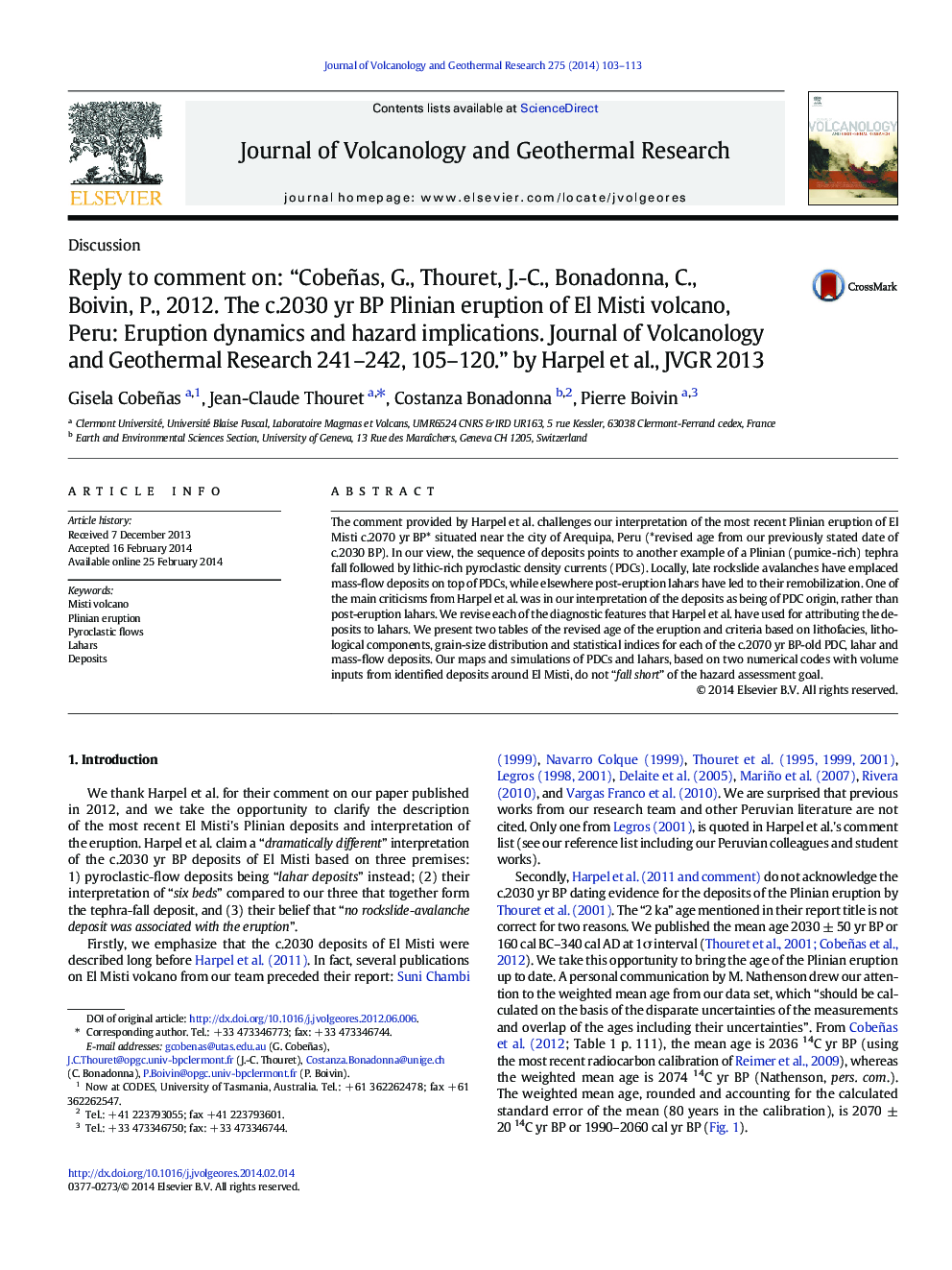| Article ID | Journal | Published Year | Pages | File Type |
|---|---|---|---|---|
| 4712996 | Journal of Volcanology and Geothermal Research | 2014 | 11 Pages |
•We revise the age, c.2070 yr BP, of the most recent Plinian eruption (VEI4) of El Misti.•We revise the diagnostic criteria of tephra, pyroclastic density currents, and mass-flow deposits.•Locally, PDCs and mass-flow deposits have been remobilized by post-eruption lahars.•Lithofacies, components, grain-size distribution and indices allow for distinction of deposits.•Our hazard assessment is based on geologic maps and numerical simulations of PDCs and lahars.
The comment provided by Harpel et al. challenges our interpretation of the most recent Plinian eruption of El Misti c.2070 yr BP* situated near the city of Arequipa, Peru (*revised age from our previously stated date of c.2030 BP). In our view, the sequence of deposits points to another example of a Plinian (pumice-rich) tephra fall followed by lithic-rich pyroclastic density currents (PDCs). Locally, late rockslide avalanches have emplaced mass-flow deposits on top of PDCs, while elsewhere post-eruption lahars have led to their remobilization. One of the main criticisms from Harpel et al. was in our interpretation of the deposits as being of PDC origin, rather than post-eruption lahars. We revise each of the diagnostic features that Harpel et al. have used for attributing the deposits to lahars. We present two tables of the revised age of the eruption and criteria based on lithofacies, lithological components, grain-size distribution and statistical indices for each of the c.2070 yr BP-old PDC, lahar and mass-flow deposits. Our maps and simulations of PDCs and lahars, based on two numerical codes with volume inputs from identified deposits around El Misti, do not “fall short” of the hazard assessment goal.
Graphical abstractFigure optionsDownload full-size imageDownload as PowerPoint slide
